PHOTOS: Vaccinating the island scrub jay against the West Nile virus
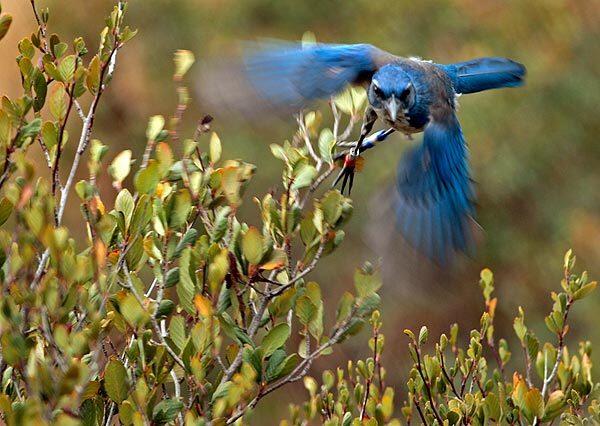
Scientists, worried that the West Nile virus could destroy the rare island scrub jay on Santa Cruz Island, are trapping and vaccinating the birds one by one. The jays are lured into boxes with a peanut or caught in a net. Researchers then administer a high-tech vaccine developed in just the last couple of years.
See full story (Al Seib / Los Angeles Times)
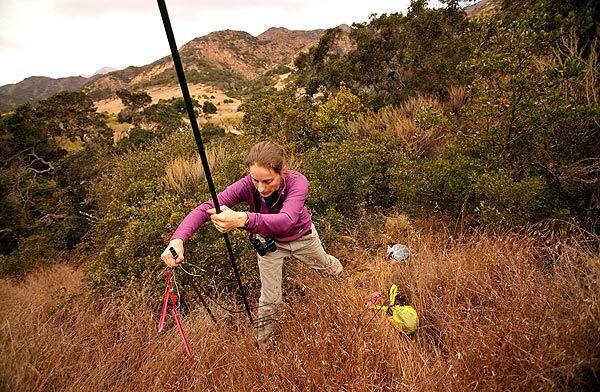
Katie Langin, a graduate student from Colorado State University, sets up a net to capture an island scrub jay on Santa Cruz Island. Scientists have captured about 150 of the rare birds, which exist nowhere else. They hope to trap another 100 this fall and spring, which would be roughly 10% of the entire population.
See full story (Al Seib / Los Angeles Times)
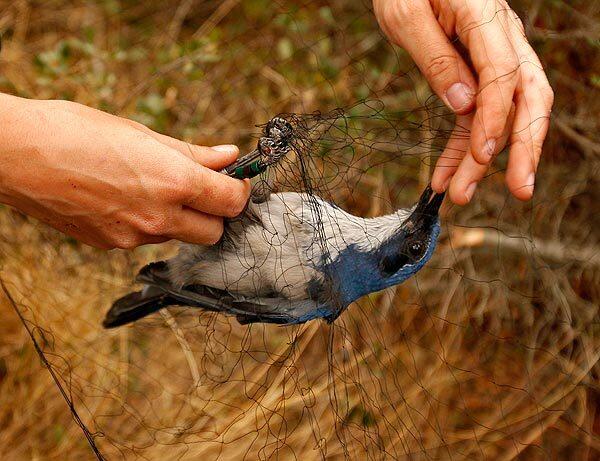
Katie Langin, a graduate student from Colorado State University, is bitten while handling an island scrub jay captured in a net on Santa Cruz Island. Using statistical models, researchers figure there are fewer than 3,000 of the jays on the 96-square-mile island. They don’t know whether the species is declining.
See full story (Al Seib / Los Angeles Times)
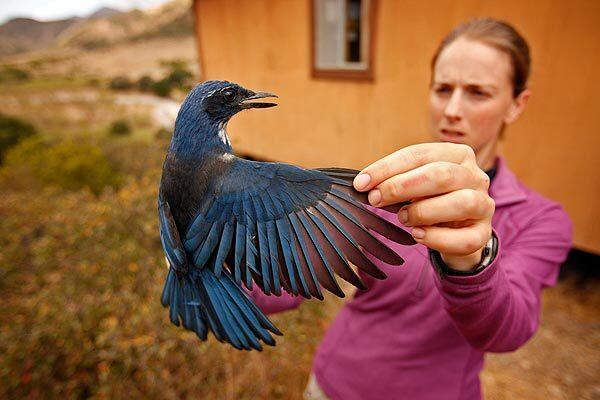
Katie Langin, a graduate student from Colorado State University, checks on the condition of a captured island scrub jay. Birders from around the United States come to the island, hoping to glimpse its native jay.
See full story (Al Seib / Los Angeles Times)
Advertisement
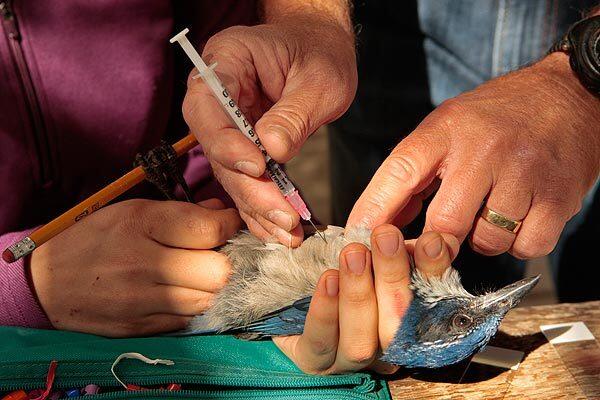
Veterinarian Winston Vickers, right, and Katie Langin, a graduate student from Colorado State University, administer vaccine to an island scrub jay. The jay is a cousin of the Western scrub jay, a fixture in Southern California backyards and campgrounds. The Santa Cruz version is bigger -- the reasons for “island gigantism” are unknown -- and a more brilliant blue.
See full story (Al Seib / Los Angeles Times)
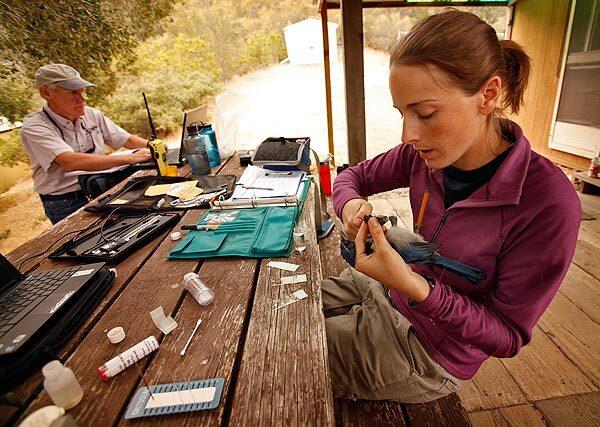
Katie Langin, a graduate student from Colorado State University, places a color-coded band on the leg of a captured island scrub jay. Like crows, island scrub jays are corvids -- a family of birds so intelligent that one expert has dubbed them “feathered apes.”
See full story (Al Seib / Los Angeles Times)
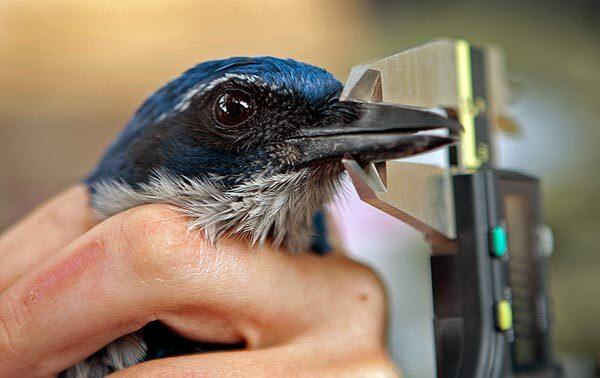
Katie Langin, a graduate student from Colorado State University, measures the beak of a captured island scrub jay. When they pick up acorns, they rattle them around, listening for weevil damage. When they bury them, it’s always bottoms up -- the perfect position, it turns out, for growing trees.
See full story (Al Seib / Los Angeles Times)

Mario Pesendorfer, a graduate student from the University of Nebraska, watches for the island scrub jay on Santa Cruz Island. A plummeting population would be an environmental tragedy, said Scott Sillett, a Smithsonian biologist. “We’d lose North America’s only endemic island bird. On all the continent’s thousands of islands, there’s just one species confined to a single island -- and this is it.”
See full story (Al Seib / Los Angeles Times)
Advertisement
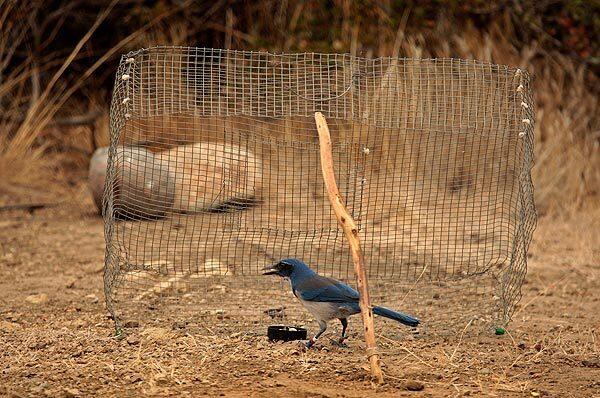
An island scrub jay makes a run to retrieve peanuts from a cage trap on Santa Cruz Island. This particular jay was not trapped because it had already been banded and then vaccinated against the deadly West Nile virus.
See full story (Al Seib / Los Angeles Times)

An aerial view of Santa Cruz Island, home to the island scrub jay. Biologists working in Channel Islands National Park worry that it’s easy pickings for the West Nile virus, which could swiftly wipe out the species once infected mosquitoes or birds cross the Santa Barbara Channel.
See full story (Al Seib / Los Angeles Times)







